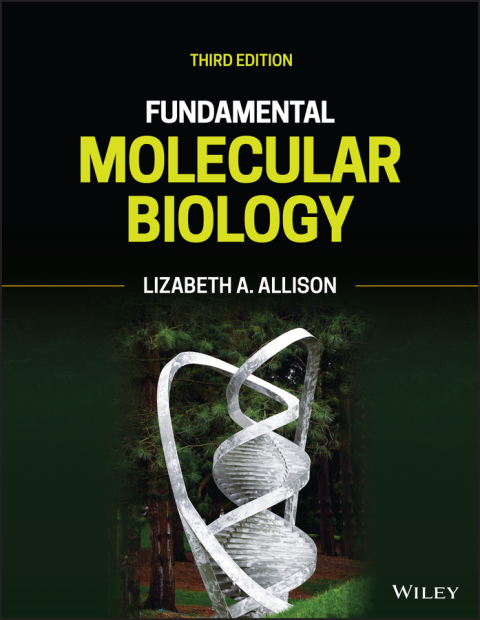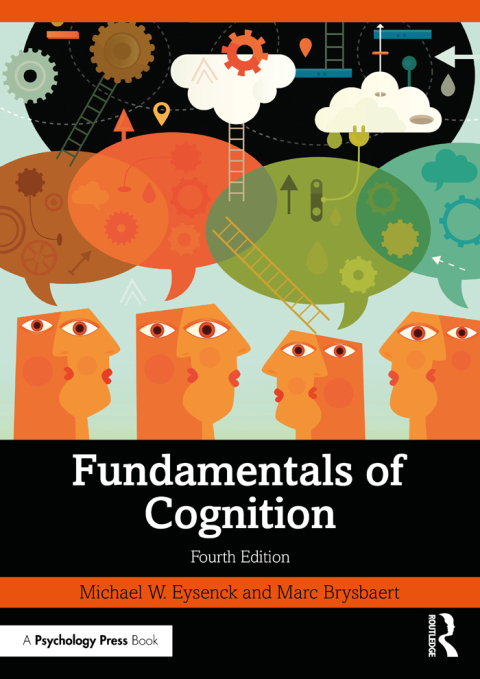Description
Efnisyfirlit
- Cover
- Title Page
- Copyright
- ABOUT THE COMPANION WEBSITE
- CHAPTER ONE: The Beginnings of Molecular Biology
- 1.1 Introduction
- 1.2 Insights into the nature of the hereditary material
- 1.3 A model for the structure of DNA: The DNA double helix
- 1.4 The central dogma of molecular biology
- 1.5 An evolutionary framework for heredity
- BIBLIOGRAPHY
- CHAPTER TWO: The Structure of DNA
- 2.1 Introduction
- 2.2 Primary structure: the components of nucleic acids
- 2.3 Secondary structure of DNA
- 2.4 Unusual DNA secondary structures
- 2.5 Tertiary structure of DNA
- BIBLIOGRAPHY
- CHAPTER THREE: The Versatility of RNA
- 3.1 Introduction
- 3.2 RNA is involved in a wide range of cellular processes
- 3.3 Structural motifs of RNA
- 3.4 The discovery of RNA catalysis
- 3.5 RNA‐based genomes
- BIBLIOGRAPHY
- CHAPTER FOUR: Protein Structure and Folding
- 4.1 Introduction
- 4.2 Primary structure: amino acids and the genetic code
- 4.3 The three‐dimensional structure of proteins
- 4.4 Protein function and regulation of activity
- 4.5 Protein folding and misfolding
- BIBLIOGRAPHY
- CHAPTER FIVE: Genome Organization and Evolution
- 5.1 Introduction
- 5.2 Genome organization varies in different organisms
- 5.3 Packaging of the eukaryotic genome
- 5.4 The majority of the eukaryotic genome is noncoding
- 5.5 Lateral gene transfer contributes to genome evolution
- 5.6 Prokaryotic and viral genome organization
- BIBLIOGRAPHY
- CHAPTER SIX: DNA Replication and Telomere Maintenance
- 6.1 Introduction
- 6.2 Early insights into the mode of bacterial DNA replication
- 6.3 DNA polymerases are the enzymes that catalyze DNA synthesis from 5′ to 3′
- 6.4 The bacterial replisome
- 6.5 The eukaryotic replisome
- 6.6 Alternative modes of circular DNA replication
- 6.7 Telomere maintenance: the role of telomerase in DNA replication, aging, and cancer
- BIBLIOGRAPHY
- CHAPTER SEVEN: DNA Repair Pathways
- 7.1 Introduction
- 7.2 Mutations and DNA damage
- 7.3 Lesion bypass
- 7.4 Direct reversal of DNA damage
- 7.5 Repair of single base changes and structural distortions by removal of DNA damage
- 7.6 Double‐strand break repair by removal of DNA damage
- BIBLIOGRAPHY
- CHAPTER EIGHT: Transcription in Bacteria
- 8.1 Introduction
- 8.2 Mechanism of transcription
- 8.3 Insights into gene regulation from the lactose (lac) operon
- 8.4 Mode of action of transcriptional regulators
- 8.5 Control of gene expression by RNA
- 8.6 Gene regulatory networks
- BIBLIOGRAPHY
- CHAPTER NINE: Transcription in Eukaryotes
- 9.1 Introduction
- 9.2 Overview of transcriptional regulation
- 9.3 Protein‐coding gene regulatory elements
- 9.4 The general transcription machinery and mechanism of transcription
- 9.5 The role of specific transcription factors in gene regulation
- 9.6 Transcriptional coactivators and corepressors
- 9.7 Transcription complex assembly: the enhanceosome model versus the “hit‐and‐run” model
- 9.8 Regulated nuclear import and export of transcription factors
- BIBLIOGRAPHY
- CHAPTER TEN: Epigenetic Mechanisms of Gene Regulation
- 10.1 Introduction
- 10.2 Epigenetic markers
- 10.3 Genomic imprinting
- 10.4 X chromosome inactivation
- 10.5 Epigenetic control of transposable elements
- 10.6 Epigenetics and nutritional legacy
- 10.7 Allelic exclusion
- BIBLIOGRAPHY
- CHAPTER ELEVEN: RNA Processing and Posttranscriptional Gene Regulation
- 11.1 Introduction
- 11.2 The discovery of split genes
- 11.3 Splicing occurs by a variety of mechanisms
- 11.4 Cotranscriptional processing of nuclear pre‐mRNA
- 11.5 Alternative splicing
- 11.6 RNA editing
- 11.7 Post‐transcriptional gene regulation by RNAi
- 11.8 RNA turnover in the nucleus and cytoplasm
- BIBLIOGRAPHY
- CHAPTER TWELVE: The Mechanism of Translation
- 12.1 Introduction
- 12.2 Ribosome structure and assembly
- 12.3 Aminoacyl‐tRNA synthetases
- 12.4 Initiation of translation
- 12.5 Elongation and events in the ribosome tunnel
- 12.6 Termination of translation
- 12.7 Translational and post‐translational control
- BIBLIOGRAPHY
- CHAPTER THIRTEEN: Recombinant DNA Technology and Genetically Modified Organisms
- 13.1 Introduction
- 13.2 The beginnings of recombinant DNA technology
- 13.3 Cutting and joining DNA
- 13.4 Molecular cloning
- 13.5 Library screening and probes
- 13.6 Restriction mapping and RFLP analysis
- 13.7 DNA sequencing
- 13.8 Introduction to genetically modified organisms
- 13.9 Transgenic mice: pronuclear microinjection
- 13.10 Gene targeting in mouse embryonic stem cells
- 13.11 CRISPR‐Cas gene editing
- 13.12 Applications of genetically modified animals
- 13.13 Cloning by nuclear transfer
- 13.14 Transgenic plants
- BIBLIOGRAPHY
- CHAPTER FOURTEEN: Tools for Analyzing Gene Organization, Expression, and Function
- 14.1 Introduction
- 14.2 DNA typing
- 14.3 Genomics, proteomics, and beyond
- 14.4 Whole‐genome sequencing
- 14.5 Reporter genes
- 14.6 Transcriptomics: RNA expression and localization
- 14.7 Proteomics: protein expression and localization
- 14.8 Analysis of nucleic acid–protein interactions
- 14.9 Analysis of protein–protein interactions
- 14.10 Structural analysis of proteins
- BIBLIOGRAPHY
- CHAPTER FIFTEEN: Medical Molecular Biology
- 15.1 Introduction
- 15.2 Genomic medicine
- 15.3 Molecular biology of cancer
- 15.4 Gene therapy
- BIBLIOGRAPHY
- APPENDIX
- Chapter 1
- Chapter 2
- Chapter 3
- Chapter 4
- Chapter 5
- Chapter 6
- Chapter 7
- Chapter 8
- Chapter 9
- Chapter 10
- Chapter 11
- Chapter 12
- Chapter 13
- Chapter 14
- Chapter 15
- GLOSSARY
- Index
- End User License Agreement







Reviews
There are no reviews yet.